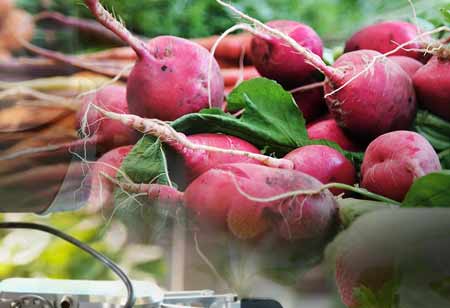THANK YOU FOR SUBSCRIBING
Be first to read the latest tech news, Industry Leader's Insights, and CIO interviews of medium and large enterprises exclusively from Food and Beverage Tech Review
Using Bioinformation Research to Transform Winemaking and Grape Growing
The short- to medium-term trends driving bioinformational research in this field is defined by the increased availability of biological information on various time scales for digital consumption.

By
Food and Beverages Tech Review | Friday, March 11, 2022
Stay ahead of the industry with exclusive feature stories on the top companies, expert insights and the latest news delivered straight to your inbox. Subscribe today.
The convergence of cyberbio technology and high-throughput automation in biofoundries creates chances for the wine industry to shape the future of bioinformation engineering.
FREMONT, CA: The short- to medium-term trends driving bioinformational research in this field is defined by the increased availability of biological information on various time scales for digital consumption. Sentinel agriculture on a large scale is one of these exciting research and development routes. By incorporating cyber biotechnologies into multiscale designs, bidirectional communication between organic and inorganic information systems, such as biological devices and computer systems, can be enabled. For instance, biosensor-enabled sentinel vines could facilitate data transfer from within an engineered vine in a vineyard and its surrounding terroir to a nearby innovative farm via satellite constellations or fifth-generation telecom infrastructure. Sentinel viticulture is anticipated to make an array of bioinformation above and below ground at varying degrees of complexity and abstraction from the micro to the nanoscale. Once this data is gathered, it may be incorporated into decision-making and control loops that initiate autonomous robotic interventions on the vine or in the vineyard. The first step toward reducing the latency of independent robotic interventions and implementing next-generation precision viticulture is to increase the real-time availability of bioinformation in digital systems. Vintners that employ these types of monitoring technology over time are likely to identify the bioinformational footprint associated with outstanding vintages. While this may negate some of the magic involved in producing a superior bottle of wine, it will enable those who comprehend and reinforce each component of a superior vintage to surpass their opponents. At its heart is a debunking of the myths and mysticism surrounding winemaking and tasting, as well as an appreciation for the fact that each element in a biological process generates bioinformational metadata that can be monitored, analyzed, and evaluated using modern technology. The digital shadow of a superb wine will become as precious, if not more valuable, than the vintage itself. It will assure that a vintner can continue to produce at a high level of quality and is ultimately a bioinformational property of the winemaker's work. Perhaps more significantly, that digital shadow may soon be synthetically reproducible in the sense that the chemical makeup of a higher vintage can be generated without the use of grapes or fermentation.
Similarly, a vineyard equipped with a sentinel vine equipped with a synthetic biosensor may rationally engineer electrical pulses from the vine to a nearby smart viticultural station via satellites to alert when the vines are experiencing water stress automatically activate the irrigation system. This could address issues of under-and-over-watering, thereby optimizing both water use and crop productivity. Similarly, the same sentinel vine could report in real-time when the vineyard is subjected to mold-induced stress or other biotic stress.
Without the winemaker's intervention, autonomous fermentation tanks may be able to provide intelligent culture condition control and targeted activation of modified gene expression in malolactic bacteria and wine yeast strains. Bioinformational systems comprising optogenetic control of gene expression and biosensor-mediated output of wine yeast and malolactic bacteria's intracellular physiological states could be integrated within a wine tank to assist optimal production and quality. Synthetic biology applications in alcoholic drinks provide several interesting new growth directions that the industry will need to monitor over the next decade closely.
I agree We use cookies on this website to enhance your user experience. By clicking any link on this page you are giving your consent for us to set cookies. More info







